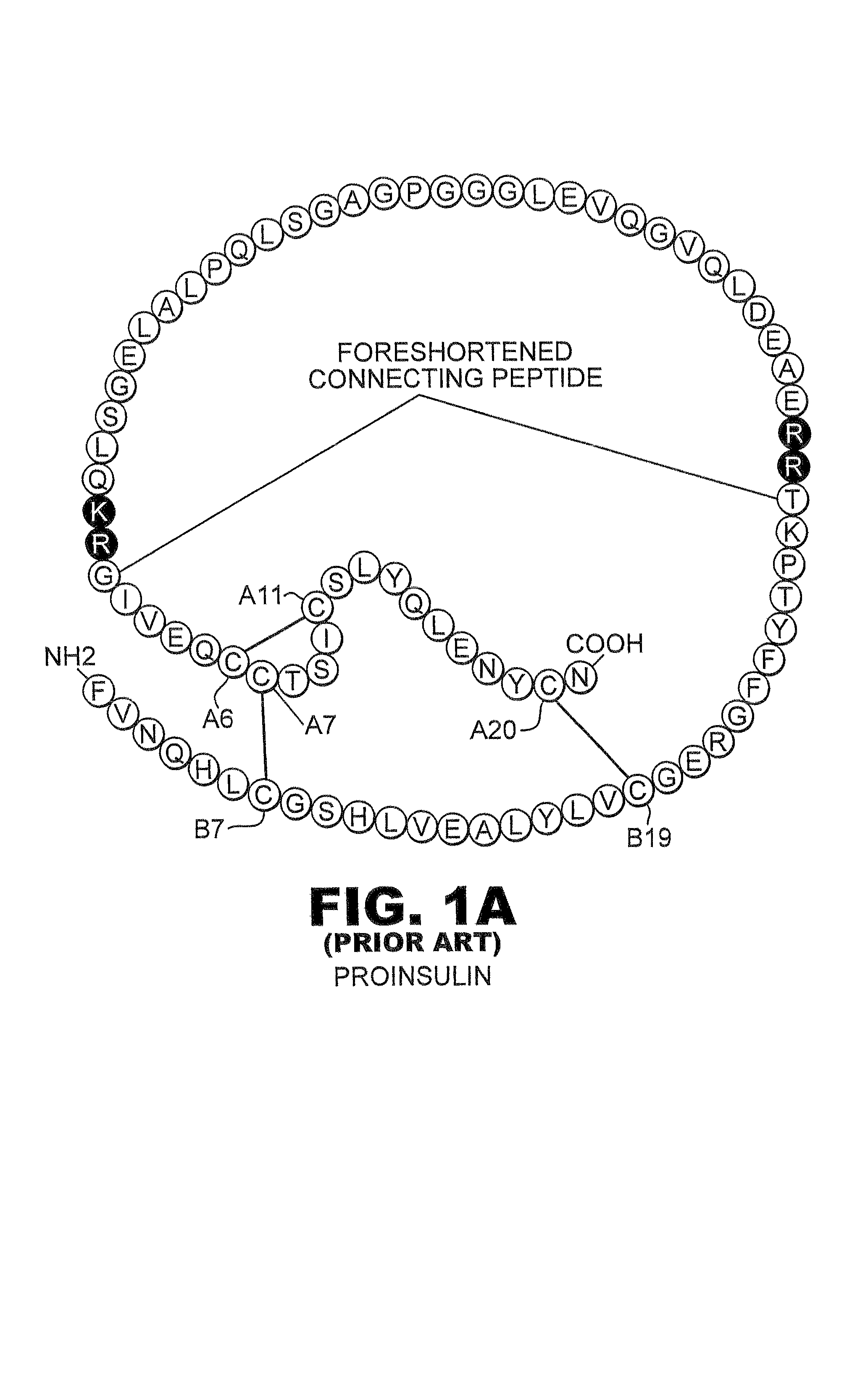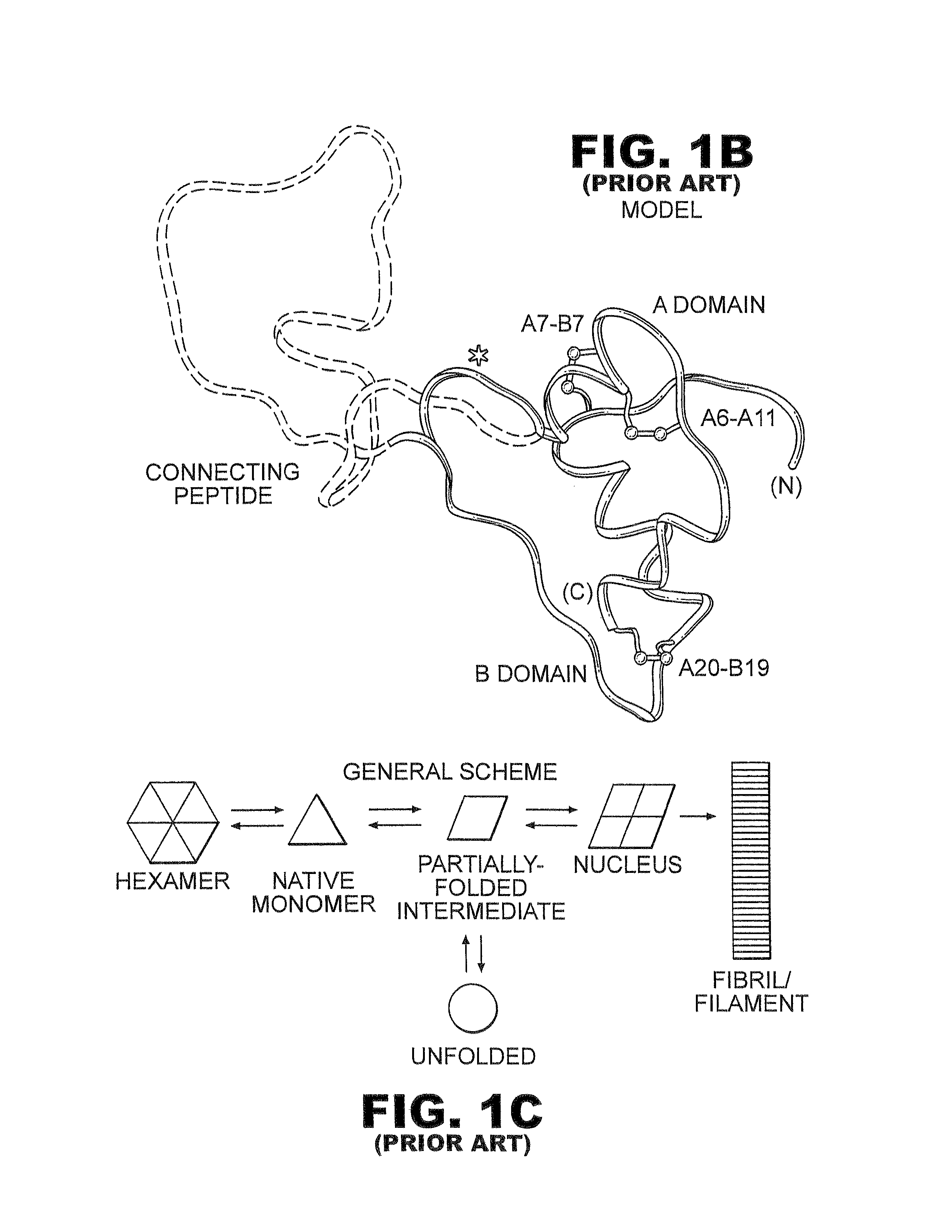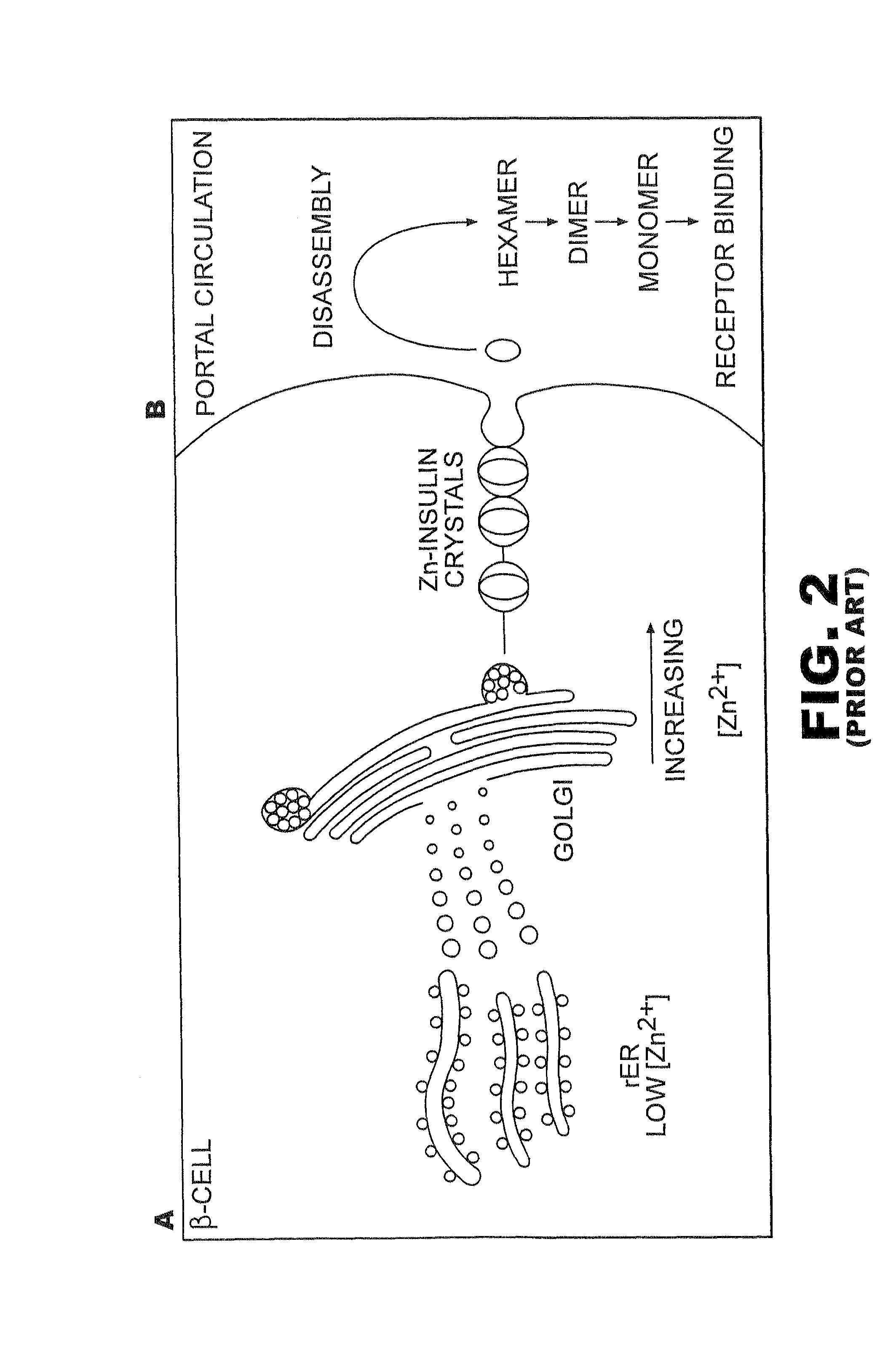Fibrillation-resistant insulin and insulin analogues
a technology of insulin analogues and insulin resistance, which is applied in the direction of drug compositions, peptide/protein ingredients, metabolic disorders, etc., can solve the problems of poor physical stability, retardation but not prevention of fibrillation of zinc-stabilized hexamers, and more rapid fibrillation, so as to facilitate absorption and rapid dissociation , the effect of rapid absorption
- Summary
- Abstract
- Description
- Claims
- Application Information
AI Technical Summary
Benefits of technology
Problems solved by technology
Method used
Image
Examples
Embodiment Construction
[0045]The present invention is directed toward recombinant single-chain insulin analogues that provide increased resistance to fibrillation and their use in treatment of diabetes, particularly their use in insulin delivery via implantable or external pumps. To that end, the present invention provides insulin analogues that contain an insulin A-chain polypeptide and an insulin B-chain polypeptide connected by a truncated linker polypeptide. In one example, the linker polypeptide may be less than 15 amino acids long. In other examples, the linker polypeptide may be 4, 5, 6, 7, 8, 9, or 10 amino acids long.
[0046]The single-chain insulin analogue of the present invention may also contain other modifications. As used in this specification and the claims, various substitution analogues of insulin may be noted by the convention that indicates the amino acid being substituted, followed by the position of the amino acid, optionally in superscript. The position of the amino acid in question i...
PUM
| Property | Measurement | Unit |
|---|---|---|
| pH | aaaaa | aaaaa |
| physiological temperature | aaaaa | aaaaa |
| temperatures | aaaaa | aaaaa |
Abstract
Description
Claims
Application Information
 Login to View More
Login to View More - R&D
- Intellectual Property
- Life Sciences
- Materials
- Tech Scout
- Unparalleled Data Quality
- Higher Quality Content
- 60% Fewer Hallucinations
Browse by: Latest US Patents, China's latest patents, Technical Efficacy Thesaurus, Application Domain, Technology Topic, Popular Technical Reports.
© 2025 PatSnap. All rights reserved.Legal|Privacy policy|Modern Slavery Act Transparency Statement|Sitemap|About US| Contact US: help@patsnap.com



